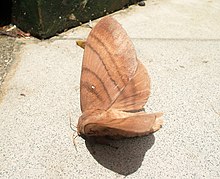
Pinus kesiya is one of the most widely distributed pines in Asia. Its range extends south and east from the Khasi Hills in the northeast Indian state of Meghalaya, to northern Thailand, Philippines, Burma, Cambodia, Laos, southernmost China, and Vietnam. It is an important plantation species elsewhere in the world, including in southern Africa and South America.
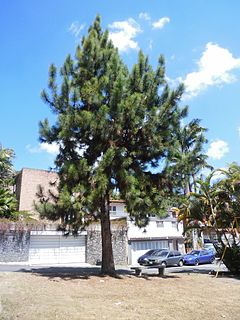
The Caribbean pine, Pinus caribaea, is a hard pine, native to Central America, Cuba, the Bahamas, South Florida, and the Turks and Caicos Islands. It belongs to subsection Australes in subgenus Pinus. It inhabits tropical and subtropical coniferous forests such as Bahamian pineyards, in both lowland savannas and montane forests.
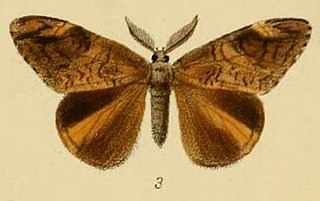
Aroa is a genus of moths in the subfamily Lymantriinae first described by Francis Walker in 1855. Species are distributed in South Africa, China, throughout India, Sri Lanka, Myanmar, and Java.

Oreta extensa is a species of moth of the family Drepanidae described by Francis Walker in 1855. It is found in China, Taiwan, India, Sri Lanka, Indonesia and Thailand.

Barsine cuneonotata, the footman moth, is a moth of the subfamily Arctiinae. The species was first described by Francis Walker in 1855. It is found in China, Thailand, India, Sri Lanka, Sumatra, Borneo, Singapore and the Philippines,
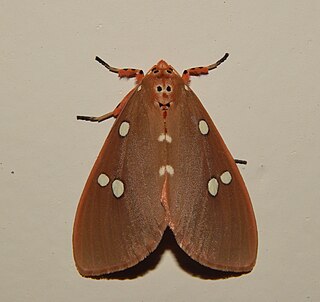
Tinolius eburneigutta is a moth of the family Erebidae first described by Francis Walker in 1855. It is found in India, Sri Lanka, and Thailand.
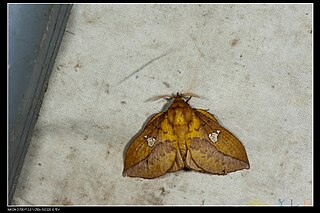
Euthrix laeta is a moth of the family Lasiocampidae first described by Francis Walker in 1855.
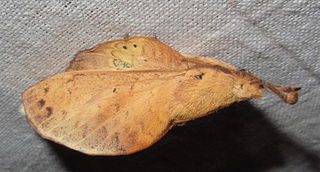
Gastropacha pardale, the brown lapped moth, is a moth of the family Lasiocampidae. The species was first described by Francis Walker in 1855.
Lenodora vittata is a moth of the family Lasiocampidae first described by Francis Walker in 1855. It is found in India and Sri Lanka.
Suana concolor is a moth of the family Lasiocampidae first described by Francis Walker in 1855. It is found in India and Sri Lanka, to South China, Java, Borneo and the Philippines.
Aroa plana is a moth of the family Erebidae first described by Francis Walker in 1855. It is found in India and Sri Lanka. The caterpillar is known to feed on Bambusa species.
Artaxa guttata is a moth of the family Erebidae first described by Francis Walker in 1855. It is found in Bangladesh, Sri Lanka, and India.
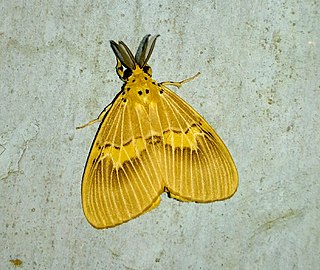
Cispia punctifascia is a moth of the family Erebidae first described by Francis Walker in 1855. It is found in India, Sri Lanka, Sumatra, Borneo and originated in Malaysia.
Euproctis bimaculata is a moth of the family Erebidae first described by Francis Walker in 1855. It is found in India, Sri Lanka and Thailand.
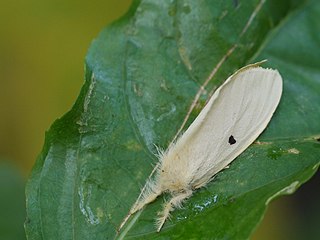
Euproctis lunata, the castor hairy caterpillar, is a moth of the family Erebidae. The species was first described by Francis Walker in 1855. It is found in India, Pakistan, Sri Lanka and Thailand.

Lymantria ampla is a moth of the family Erebidae first described by Francis Walker in 1855. It is found in India and Sri Lanka.
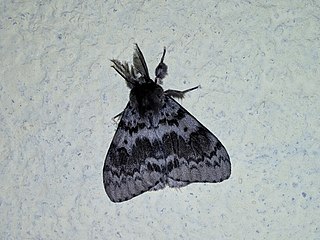
Lymantria incerta is a moth of the family Erebidae first described by Francis Walker in 1855. It is found in India and Sri Lanka.
Stenachroia elongella, the sorghum earhead worm or cob borer, is a moth of the family Pyralidae. The species was first described by George Hampson in 1898. It is found in India and Sri Lanka.
Ramesa tosta is a moth of the family Notodontidae first described by Francis Walker in 1855. It is found in Sri Lanka, India, Myanmar, Java, South China, Taiwan and Japan.
Autoba olivacea, the brinjal leaf roller, is a moth of the family Erebidae. The species was first described by Francis Walker in 1858. It is found in several African countries such as Botswana, Eritrea, Madagascar, Malawi, Mozambique, Nigeria, South Africa, Tanzania, Uganda and Zimbabwe. It is also found in Sri Lanka. and India.
